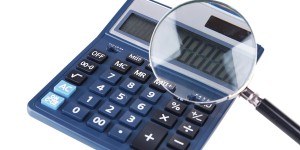Jackson, Miss., is the windiest city in America, according to catastrophe modeling firm CoreLogic’s just released rankings of the windiest cities in the country.
The CoreLogic Windy City Ranking report, which provides a national ranking of the nation’s windiest cities, was generated by calculating the total force caused by all severe wind gusts of 60 mph or more for wind events dating back to 2006.
CoreLogic assigned a numerical score from 1 to 100 on the 293 cities it analyzed with data captured at the city center plus a 10-mile radius between January 2006 and June 2015. It also took into account the total number of wind events during this time period.
Based on these factors, Jackson topped the list with 153 wind events since January 2006 and a max wind speed of 99 mph, giving it a CoreLogic ranking of 95. Springfield, Mo., was second on the list with 128 wind events and a max wind speed, followed by Boston with 121 wind events. Cambridge, Mass., was No. 4 with 116 wind events, and Shreveport, La., was No. 5 with 108 wind events.
According to the catastrophe modeling firm, Chicago, which is well known by its nickname “The Windy City,” actually came in at No. 50 for the nine-year time frame.
Below is a complete list of the top 10 windiest cities between January 2006 and June 2015, according to CoreLogic.
Windy City Ranking (Jan 2006-June 2015)
| Rank | City | State | CoreLogic Rankings | Number of Wind Events | Max Wind Speed | Date of Max Wind Speed |
|---|---|---|---|---|---|---|
| 1 | Jackson | Miss. | 95 | 153 | 99 | 4/4/2008 |
| 2 | Springfield | Mo. | 92 | 128 | 97 | 1/7/2008 |
| 3 | Boston | Mass. | 89 | 121 | 83 | 10/29/2012 |
| 4 | Cambridge | Mass. | 88 | 116 | 83 | 10/29/2012 |
| 5 | Shreveport | La. | 87 | 108 | 77 | 7/26/2013 |
| 6 | High Point | N.C. | 86 | 110 | 76 | 3/28/2010 |
| 7 | Nashville | Tenn. | 86 | 102 | 86 | 6/26/2010 |
| 8 | Gainesville | Fla. | 85 | 106 | 71 | 4/15/2007 |
| 9 | Columbia | S.C. | 85 | 101 | 73 | 7/17/2007 |
| 10 | Boulder | Colo. | 85 | 79 | 108 | 6/6/2007 |
According to Lindene Patton, global head of hazard product development for CoreLogic, the company took information from various data sources in order to compile the report—including home weather stations managed by the National Weather Service, news reports, Twitter alerts and photos—to analyze the information at a more property-specific level.
Patton said most risk decisions are currently based on radar data that measures incidents of wind off the ground and not what happens on the ground or at specific geological points.
“Many other reports measure data from airports, but no one lives in an airport,” said Patton. “If people are interested in protecting assets and measuring risks, they want to understand what is happening not at an airport but on their block.”
CoreLogic looked just at cities with populations of 100,000 or more because urban areas have the most reliable sources of data, said Patton. It did not measure tornado events because they have specific meteorological conditions that are short and sporadic.
“The insurance industry separates wind events, and there are different rules that apply to coverage and claims for different wind events. We wanted to really look at wind at that granular level,” Patton said.
She said CoreLogic chose 2006 as a data-gathering start date because that is when certain data became available in sufficient enough volume and reliability to move forward.
“It is also almost a 10-year period to look at what happens over a period of time,” she said.
CoreLogic plans to conduct this report annually going forward. It also analyzed and reported what cities have had the most wind events and highest wind speeds this year through June 30.
Jackson ranked No. 1 again for the total number of wind events through June 30 with 14. Five of the top 10 cities for this year were in the Southeast, with Jacksonville, Fla., at No. 2 with 10 wind events; Columbia, S.C., at No. 4 with eight wind events; Tallahassee, Fla., at No. 8 with eight wind events; and Charlotte, N.C., at No. 9 with seven wind events. It is important to note that all of these wind events were recorded prior to the storm that happened on the Southeast coast in early October.
U.S. Cities Ranked by Total Number of Wind Events in 2015 (through June 30)
| City | State | Count | Wind Speed | Date |
|---|---|---|---|---|
| Jackson | Miss. | 14 | 75 | 4/13/2015 |
| Jacksonville | Fla. | 10 | 71 | 6/13/2015 |
| Cincinnati | Ohio | 8 | 72 | 4/9/2015 |
| Columbia | S.C. | 8 | 69 | 6/30/2015 |
| Norman | Okla. | 8 | 80 | 5/16/2015 |
| Pittsburgh | Pa. | 8 | 71 | 5/29/2015 |
| Shreveport | La. | 8 | 73 | 5/25/2015 |
| Tallahassee | Fla. | 8 | 70 | 4/19/2015 |
| Charlotte | N.C. | 7 | 68 | 6/2/2015 |
| Dayton | Ohio | 7 | 72 | 5/26/2015 |
The city with the highest wind speed through June 30, 2015, was Reno, which recorded a speed of 119 mph on Feb. 6, followed by Boulder, Colo., with a wind speed of 87 mph on Jan. 1 and Wichita, Kan., with a wind speed of 86 mph on April 2.
U.S. Cities Ranked by Highest Wind Speed in 2015 (through June 30)
| City | State | Wind Speed | Date |
|---|---|---|---|
| Reno | Nev. | 119 | 2/6/2015 |
| Boulder | Colo. | 87 | 1/5/2015 |
| Wichita | Ks. | 86 | 4/2/2015 |
| Amarillo | Texas | 84 | 6/14/2015 |
| Salt Lake City | Utah | 84 | 4/14/2015 |
| Reno | Nev. | 83 | 3/15/2015 |
| Sioux Falls | S.D. | 83 | 6/21/2015 |
| Oklahoma City | Okla. | 81 | 5/16/2015 |
| Huntsville | Ala. | 80 | 4/3/2015 |
| Norman | Okla. | 80 | 5/16/2015 |
Patton said a greater emphasis is being placed on wind events in the insurance industry as more people move into larger cities where there is more wind and specific wind characteristics—such as natural wind paths between buildings.
“Also there are circumstances now where there are multiple wind events and more information is needed on how to adjust for claims,” Patton said. “There is a tremendous amount of interest in wind events in insurance, and the more events that occur the more interest you get.”




















 Four P/C Insurers Are ‘AI Titans’; AI Impact Leaders Revealed: Research
Four P/C Insurers Are ‘AI Titans’; AI Impact Leaders Revealed: Research  Surviving the ‘Silver Tsunami’: Closing the Talent, Skills Gap in Underwriting
Surviving the ‘Silver Tsunami’: Closing the Talent, Skills Gap in Underwriting  East Coast High-End Car Theft Ring Busted
East Coast High-End Car Theft Ring Busted  Insurance Carrier Employees Are Bored; Most Boring Rankings Published
Insurance Carrier Employees Are Bored; Most Boring Rankings Published 
